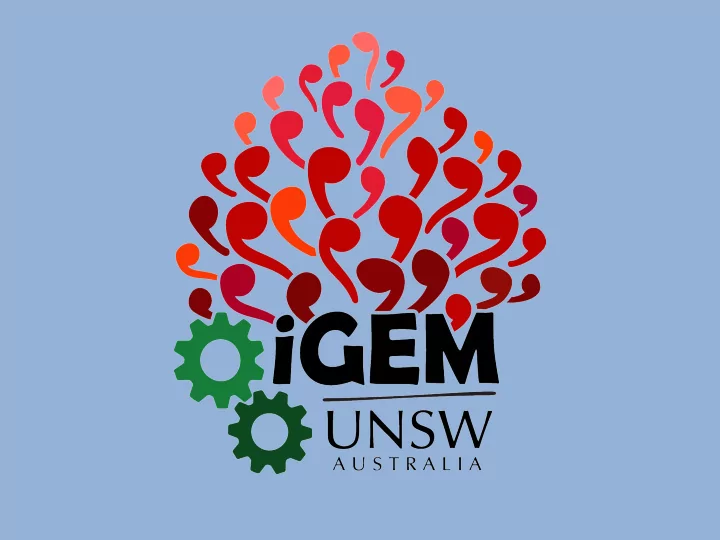

Endosynbiology Endosynbiology The use of engineered bacterial endosymbionts to create synthetic organelles in host cells.
ENDOSYMBIOSIS mitochondria ancient heterotrophic proteobacteria protection nutrients
ENDOSYMBIOSIS Pea aphid Nutrient-poor diet of sap Bacteriome housing endosymbionts
APPLICATIONS Many disorders can be attributed to a dysfunctional or absent gene or gene product cancers autoimmune Monoclonal antibody siRNA silencing of oncogenes therapy targeting for cancer therapy autoreactive antibodies
OUTLINE making endosymbionts the pHlow system regulation containment biosafety symbiont candidates and future work
MAKING ENDOSYMBIONTS how to turn a free-living bacterium into an endosymbiont: Ensure stable Design Facilitate entry survival and secretion of into cell replication useful product
A PRE-EXISTING SYSTEM Warsaw 2009 & 2010 designed a protein delivery system utilising Invasin and Listeriolysin O. Invasin (INV) Listeriolysin O (LLO Surface protein derived from A secreted hemolysin derived Yersinia enterocolitica . from Listeria monocytogenes.
HOW THE SYSTEM WORKS 1. Invasin binds to β 1- integrins 2. Endosymbiont is endocytosed (1) (3) (2) (4) 3. Listeriolysin breaks down the endosome 4. Entry is complete
pHLOW- MEDIATED ENTRY
pH INDUCIBLE PROMOTERS as the pH in the endosome drops, it induces expression of listeriolysin O 1. 1. E. coli E. coli acid shock acid shock response esponse (BBa_K1170000 ) 2. 2. L. L. lactis lactis p170 p170 (BBa_K1677300 ) 3. 3. L. L. lactis lactis p170-CP25 p170-CP25 hybrid hybrid ( BBa_K1677301 )
CRE-LOX RECOMBINATION
RNA PSEUDOKNOTS RNA secondary structures between ORFs cause translational delay Design: • Start codons were removed from viral sequences • 20bp were added upstream and downstream of the pseudoknots • Placed outside of ORFs BBa_K1677391: IBV pseudoknot BBa_K1677743: TGV pseudoknot BBa_K1677369: MMTV pseudoknot BBa_K1677666: HCV229E pseudoknot
STRUCTURAL MODELLING Structures were predicted using DotKnot and visualised using PseudoViewer. MMTV 1x Global MMTV 3x Global Sperschneider, J., Datta, A., DotKnot: pseudoknot prediction using the probability dot plot under a refined energy model. Nucleic acids research 2010, 38, e103. Sperschneider, J., Datta, A., Wise, M. J., Heuristic RNA pseudoknot prediction including intramolecular kissing hairpins. Rna 2011, 17, 27-38.
STRUCTURAL MODELLING Structures were predicted using DotKnot and visualised using PseudoViewer. TGV 1x Global TGV 3x Global
TOXIN-ANTITOXIN SYSTEM Isolated from P . aeruginosa Antitoxin binds toxin preventing cell death Prevents: Escape of recombinant bacteria Horizontal Gene transfer With no IPTG With IPTG
CONTAINMENT 1. arabinose-dependent expression of invasin 2. constitutive expression of toxin 3. IPTG-dependent expression of antitoxin 4. Cre-lox deletion of invasive genes
BIOSAFETY
ENDOSYMBIONTS
ENDOSYMBIONT CANDIDATE 1: LACTOCOCCUS LACTIS • Lactic acid bacteria model organism • Gram positive + anaerobic • Low immunogenicity + anti-oxidative ability • Part of healthy human microbiome • Generally Regarded As Safe (GRAS) (codon (codon optimised optimised) ) BBa_K1677103: LysM-INV BBa_K1677101: LLO
ENDOSYMBIONT CANDIDATE 2: SYNECHOCYSTIS PCC6803 • Freshwater cyanobacteria model organism • 1-2 day generation time • Previous evidence of survival Integrative plasmids psbA2 and pCPC Agapakis, C. M., Niederholtmeyer, H., Noche, R. R., Lieberman, T. D., Megason, S. G., Way, J. C., & Silver, P. A. (2011). Towards a synthetic chloroplast. PLoS One, 6(4), e18877.
Synechocystis PCC6803 Escherichia coli K12 Lactococcus lactis HelaT BHK21 CHO-7 Sources: http://veja0.abrilm.com.br/assets/images/2011/5/38595/Escherichia-coli-surto-alemanha-20110530-size-598.bmp , http://w3.unisa.edu.au/ciam/groups/bg/images/synechocystis.jpg,, http://textbookofbacteriology.net/Lactococcusnewtdb.jpg , http://www.atcc.org/~/media/Attachments/F/1/2/8/1768.ashx,
FUTURE WORK mitochondrial quorum model sensing transmission population during cell control division post- cell specific translational targeting other invasin/ modifications adhesin coexpression proteins of enzymes
HUMAN PRACTICES • Biosafety • Endosymbiont choice • Communication strategy • Pseudoknots and intellectual property • Hosted Aussie iGEM meet up • Outreach projects • Make your own GMO high school workshop (collaboration with UNSW Aspire and UNSW Biomod team) • BABS UNSW ethics debate
ACHIEVEMENTS • Used previously existing biobricks (INV and LLO) to design a more efficient and safe cellular entry system (pHlow) • Improved characterisation of two previously existing biobricks (CP44 and ASR promoter) • Submitted and characterised new pH inducible promoter ( L. lactis P170) • Submitted three individual pseudoknot biobricks and conducted structural modeling • Submitted three pseudoknots downstream from IPTG- inducible promoters • Invented new containment mechanism (toxin + anti-toxin) • Submitted a complete cellular entry system for Lactococcus (LysM-INV + LLO) • Adapted integrative plasmids to be biobrick compatible • Optimised Lactococcus and Synechocystis transformation protocols
QUESTIONS?
Anaer Anaerobic obic Aer Aerobic obic Heter Heterotr otrophic ophic Autotrophic Autotr ophic E. coli x x L. lactis x x Synechocystis x x x
ENDOSYMBIONT 1: E. COLI Ubiquitous synthetic biology • chassis Comparability to previous • research (Agapakis, 2011) Poor public perception • 20 minute generation time • Agapakis, C. M., Niederholtmeyer, H., Noche, R. R., Lieberman, T. D., Megason, S. G., Way, J. C., & Silver, P. A. (2011). Towards a synthetic chloroplast. PLoS One, 6(4), e18877.
ENTEROINVASIVE E. COLI STRAINS
Synechocystis PCC6803 Escherichia coli K12 Lactococcus lactis pH, temperature, ratio of cell densities, incubation times, glucose concentration HelaT BHK21 CHO-7 Sources: http://veja0.abrilm.com.br/assets/images/2011/5/38595/Escherichia-coli-surto-alemanha-20110530-size-598.bmp , http://w3.unisa.edu.au/ciam/groups/bg/images/synechocystis.jpg,, http://textbookofbacteriology.net/Lactococcusnewtdb.jpg , http://www.atcc.org/~/media/Attachments/F/1/2/8/1768.ashx,
Recommend
More recommend